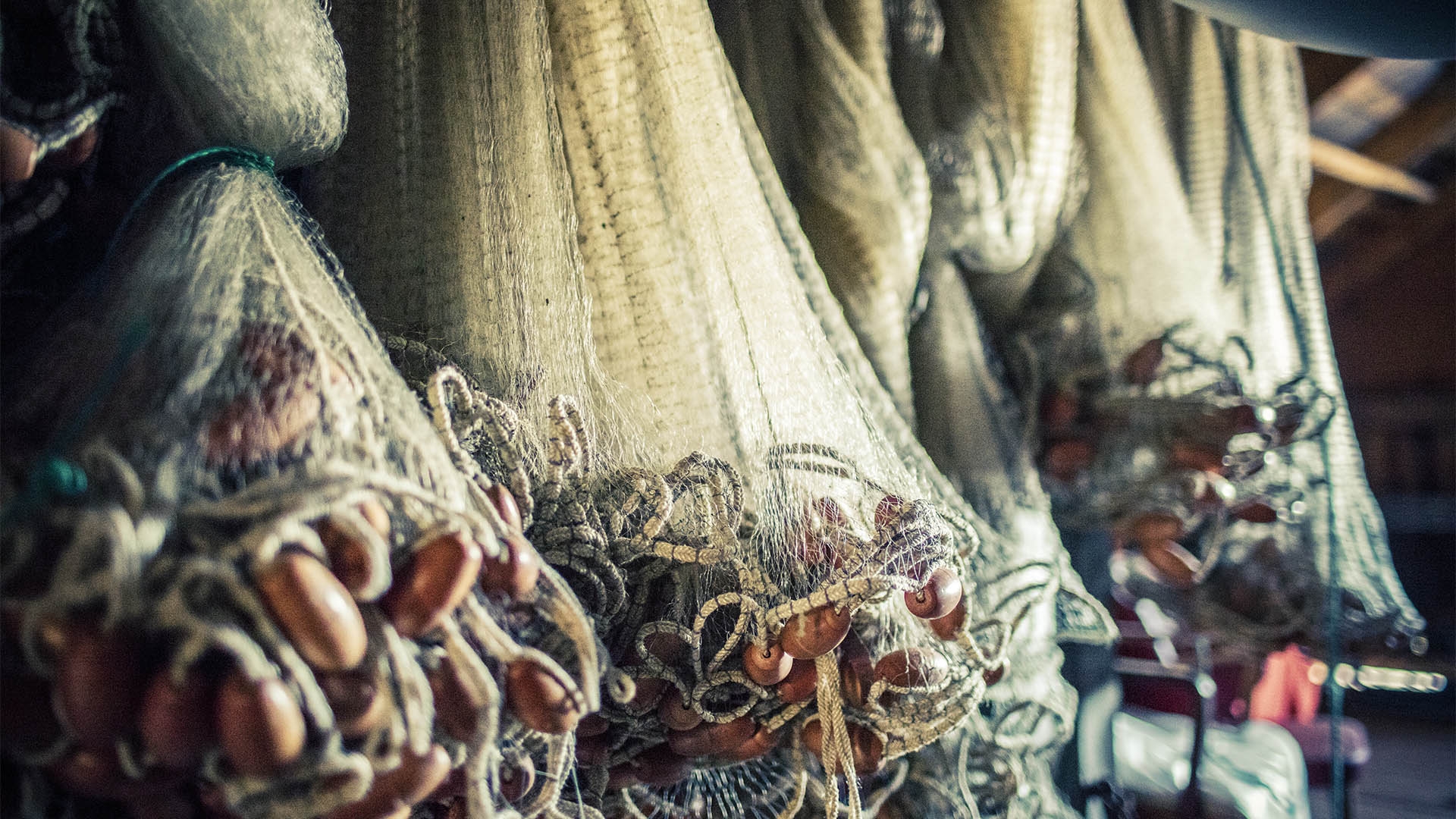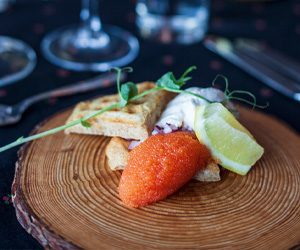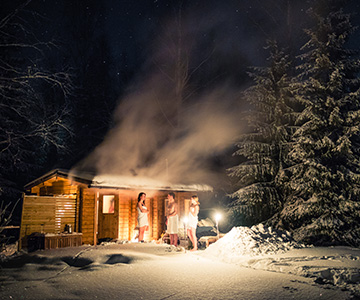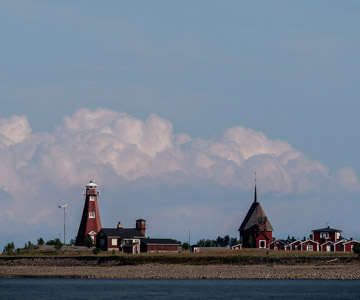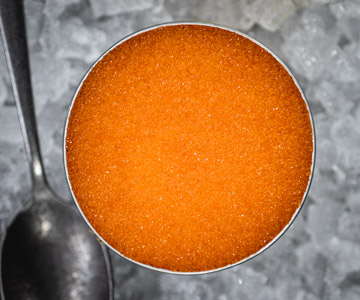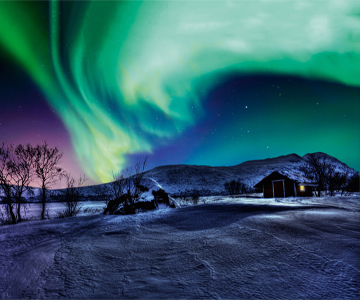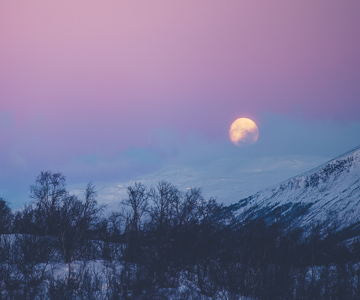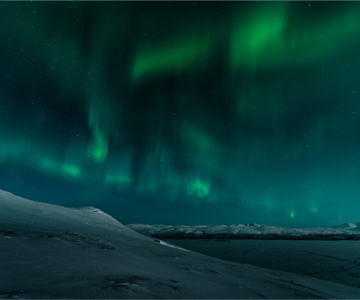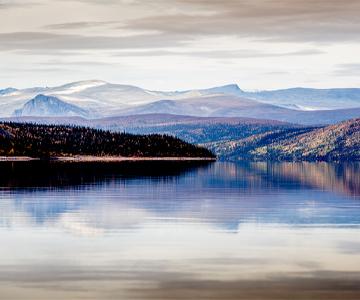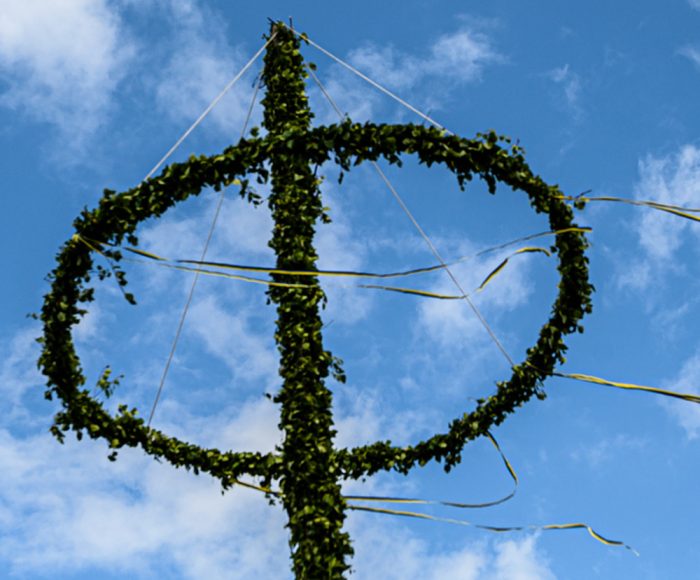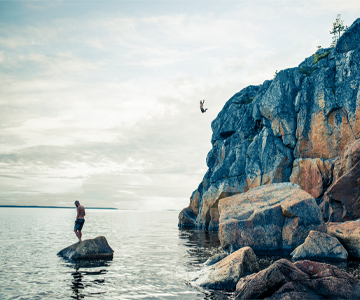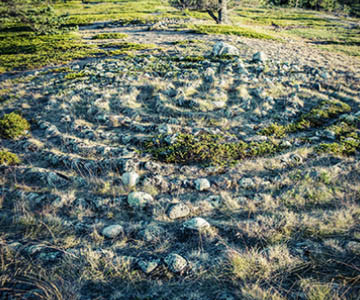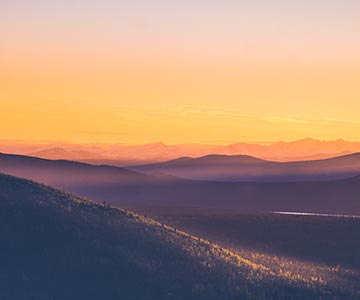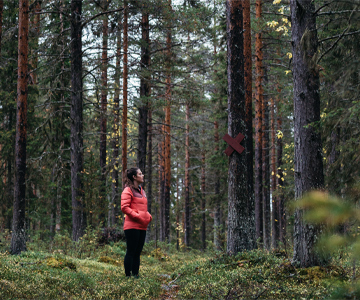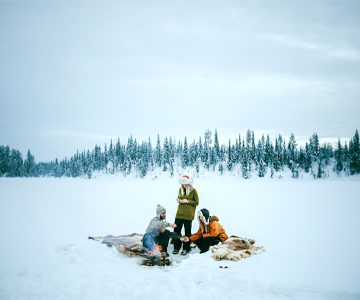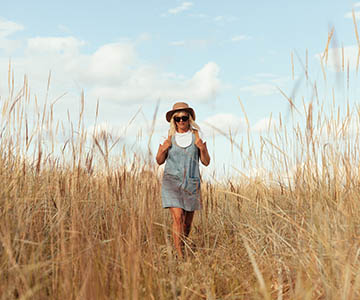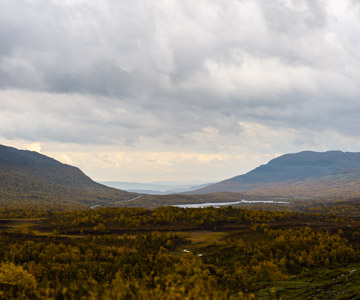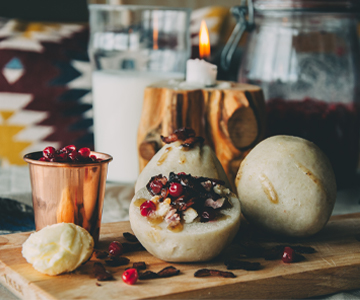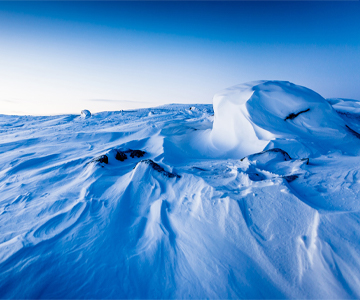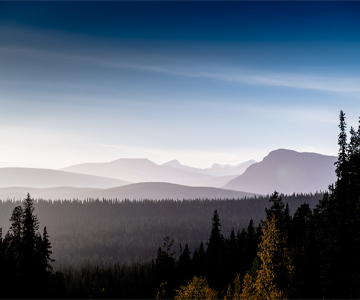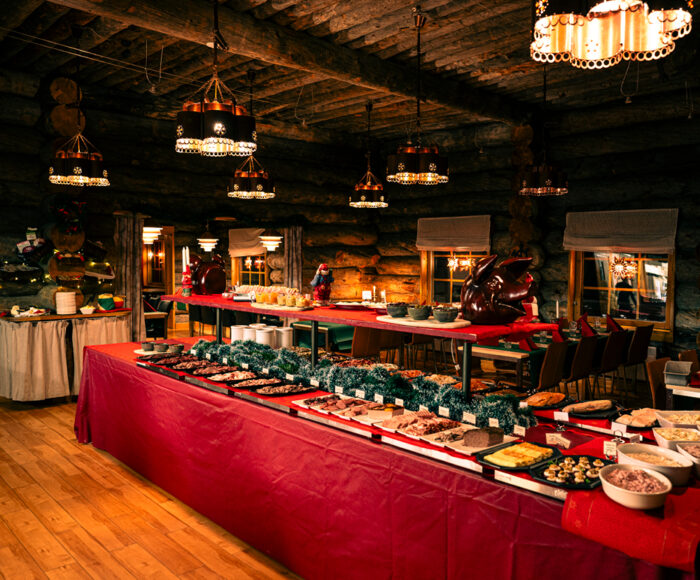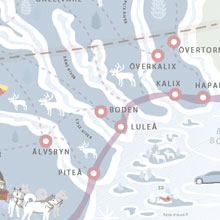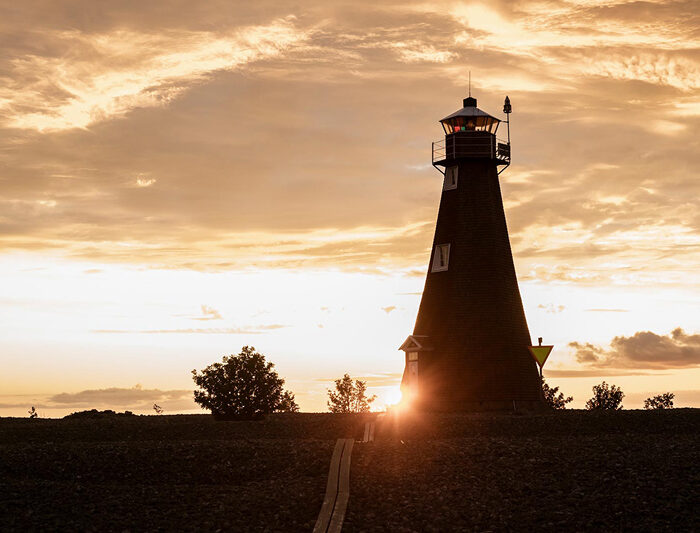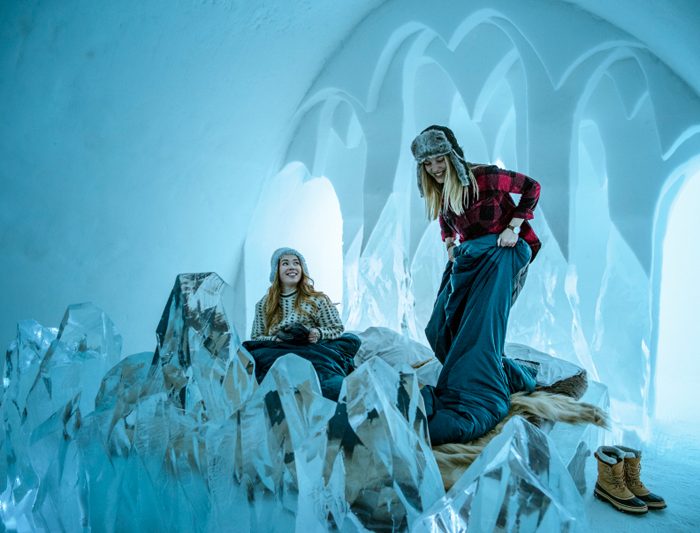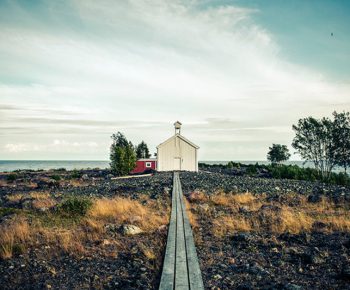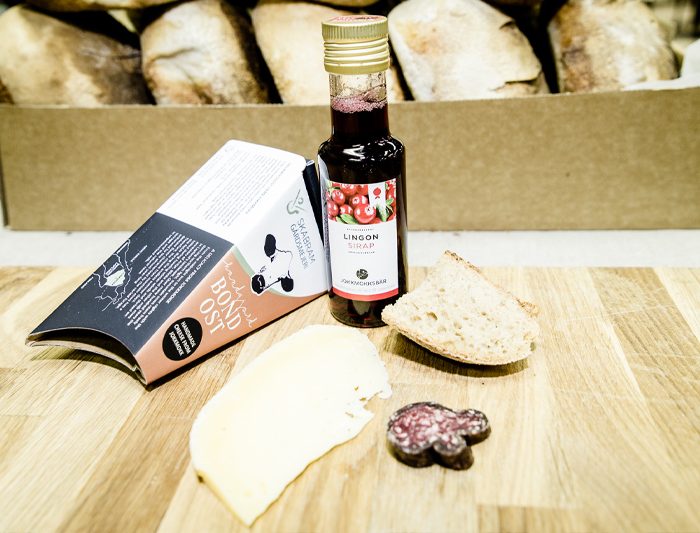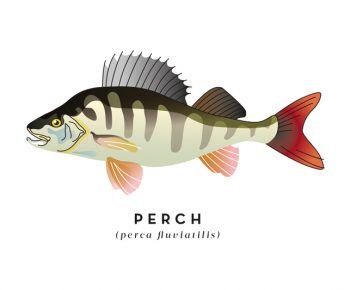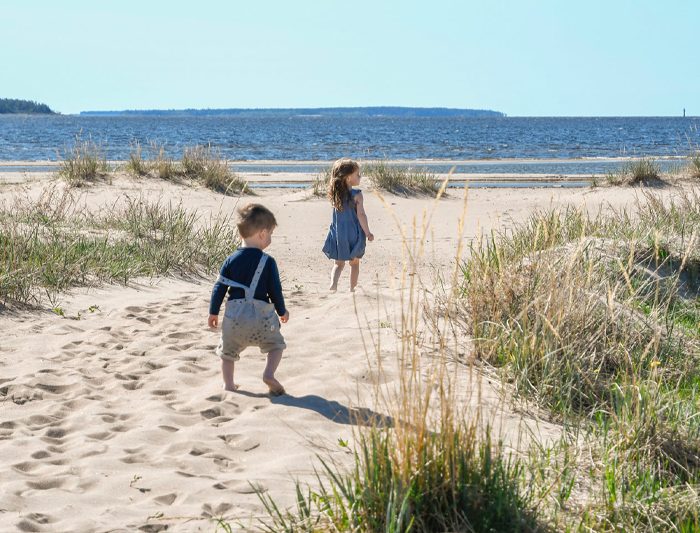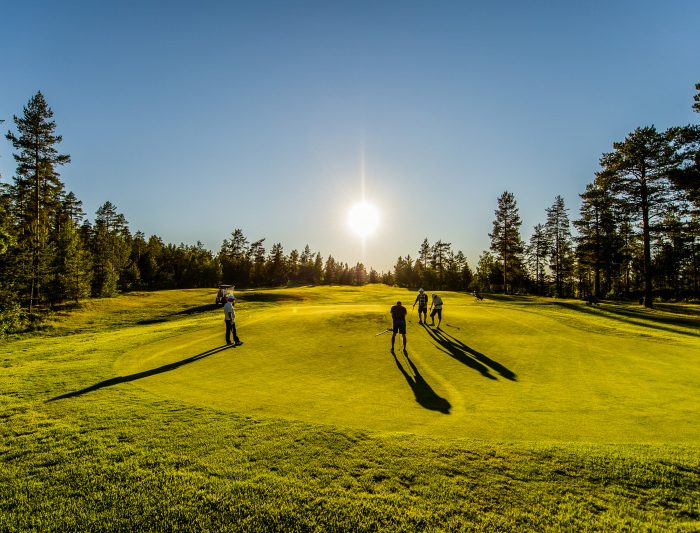On a perfect summer’s day at the end of June you get off the Haparanda Line in Kalix, the coastal community that gave its name and origin to that amazing vendace roe ‘Kalix Löjrom’. You have 36 hours to make something exciting of your weekend. The only thing you’ve done in preparation is booked accommodation. But what are you going to do in Kalix?
Afternoon: The shuttle bus from the new Haparanda Line takes you to the centre of Kalix. You have a room booked at renowned Valhall and outside on the terrace lots of people are enjoying the sunshine. You check in, then find a table on the terrace. Time to wash that travel dust down. From here you can see Nils Hotel with an inviting roof terrace, and a bit further along the street there’s the hotel Gamla Staden.
Evening: You book a table at Valhall for dinner. But before then, you have time to go to the roof terrace at Nils Hotel. The view of the town, down towards the Kalix River, is perfect. The sun stays high in the sky for a long time here, and you make the most of it.
Before dinner you have a gin and tonic. Award-winning Norrbottens Destilleri, ND, makes gin in Töre in Kalix municipality. The distillery has a showroom there, where groups can have an excellent meal and enjoy one of their gin tastings. Valhall serves an uncomplicated menu that is just right. You choose to skip the Kalix Löjrom this evening, even if it’s always tempting. You have the carpaccio instead as a starter, and a roasted side of pork before you finish off with a coffee and a couple of pralines from local Arctic Treats.
About Kalix
Where the river meets the sea lies the small town of Kalix. Explore the archipelago and savour the famous Kalix Löjrom — the Caviar of Kalix — a prized delicacy that is healthy both for you and our nature, which is served at special occasions such as the Nobel banquet, royal weddings, and other celebrations. Don’t miss the Roe Safari, a safari like no other where you can taste the red gold of Kalix.
Have a chat with the local tourist information for more insights heartoflapland.com
Curious about living in Kalix?
Check out kalix.se
Morning: You wake up early and take a lovely morning walk. You walk past the classic, beautiful Kalix Church, Sweden’s northernmost medieval church, then cross the river and follow it downstream. This is where Kalix Golf Club is located and Filipsborgs Herrgård offers accommodation. Filipsborg is, apart from a well-known accommodation choice, also a special place because this was partly where the first GSM telephones were developed. You turn back the same way when you start missing that breakfast waiting for you at the hotel.
Daytime: You’ve rented a bike from Nordic Life and tomorrow they will take you out on the river for some paddling as well. Your rented fatbike lets you discover the town, but also try a track that you’ve been recommended by Nordic Life in the nearby forest. The first stop this morning is Vassholmen, a bit upstream. Vassholmen is an island in the Kalix River, one of Sweden’s four national rivers, and was used as a separation point during log driving back in the day.
These days the island is a cultural monument, and in summer there’s a cosy summer café here, a museum and plenty of folklore.
Afternoon: The café at Vassholmen serves lunch, coffee, cake, and ice-cream, all you need in summer, really. You make yourself comfortable on a patch of grass in the sun. You have a book to read. You opt for a salad for lunch. In the afternoon you cycle back to the hotel and park your bike.
You’re thinking that it might be fun to play some boules or mini golf down by Strandängarna but decide to go on a city walk instead. Small towns make life easier for those wanting to go shopping. No crowds, and what you can see is what there is. Outside Galleria Kalix there’s a huge orange sphere, reflecting both bandy crazy Kalix and the love of vendace roe around here.
Evening: You’ve booked a vendace roe tasting with Roland at Storöns Fisk. He welcomes groups of two to eight people and somehow you manage to grab a spot this evening. Once you’re there, in the fishing lodge at island Storön where they’ve taken you, you discover they also make their own fermented herring.
You’re tempted to ask them to open up a can, but refrain and concentrate on tonight’s tasting of Kalix vendace roe: Kalix Löjrom. This vendace roe is a favourite among Sweden’s restaurants, and Sweden’s first produce with indication of origin. An amazing product, up there with Champagne, Parma ham and Stilton cheese. Roland tells us about his fishing, and how hard it is to be a professional fisherman in the north. You also visit the tiny ‘fridge shop’ and buy some wild-caught cured salmon for your picnic sandwich. You remember an earlier visit to Malören, an island in the outer archipelago. It used to be inhabited by fishermen and hunters, suffering severe hardships, and is now a place you can go to and just enjoy yourself.
You make sure you reserve a couple of cans of Storön’s fermented herring for this year’s herring premiere. Once you’re back in town Valhall is full of people, and you find a cosy table on the terrace. You go for a Negroni, with ND forest gin as a base.
The dawn of a fish
Kalix Löjrom is today a well-known brand and a raw material that can be found in fine restaurants around the world. This is the story of how it came to be.
Morning: Since summer under the midnight light makes you feel awake you take an early morning walk down to the campsite Strandängarna. Before the public bath opens for you to swim your lengths you have time for a session in the outdoor gym.
After a bit of swimming and a quick visit to the gym you walk back for breakfast and then pack your things. Nordic life arrive with kayaks to Strandängarna, so it’s time for you to return the rented bike and to paddle a couple of hours on the river before you board the train again at noon. A perfect finish to these perfect days.
Packing up: You definitely could have stayed longer; made it out to Malören and the outer archipelago. As you paddle around on the Kalix River, you remember that there’s probably good fishing in the river: pike, salmon and the exciting whitefish netting in Kamlunge. If you’d have done this in winter, the bike and the boat would have been replaced by snowmobile and skis. There’s always more to explore.
















